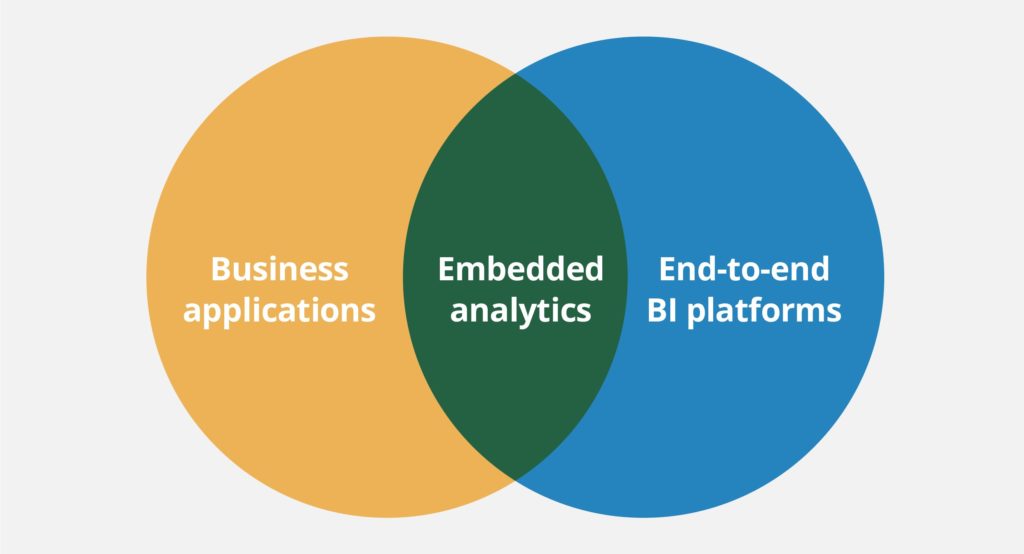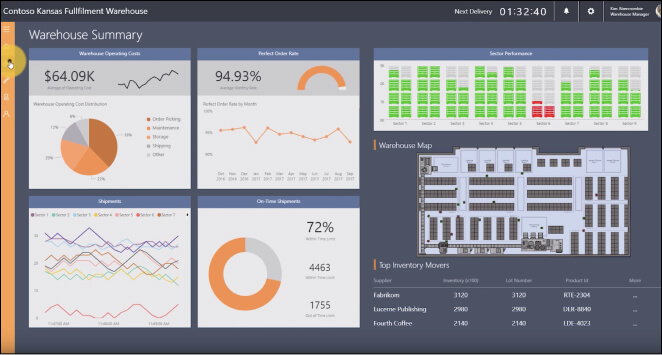How embedded analytics and Microsoft Power BI can help your business get the most of its data
Why? A couple reasons come to mind.
First is cultural. Microsoft has talked much about the need for organizations to adopt a “data-driven” culture that encourages employees at all levels to embrace data for virtually every decision and in every business process (see here and here for examples). Traditionally, however, BI has been viewed as the centralization of data from across the organization to support, and most optimized for, high-level managerial decisions. With this viewpoint in place, many employees in various roles and across various departments aren’t given the BI tools required nor do they necessarily view BI as integral to what they do. This limits the potential to establish a truly data-driven culture.
The second reason is contextual. There has been an explosion of apps introduced to the workplace, for uses ranging from productivity and operational to communication, collaboration, marketing and everything in between. The average large firm (2,000+ employees) across all industries worldwide uses 129 software applications, while smaller firms average around 73, according to a Wall Street Journal article. A further survey showed that the average business professional uses over 9 apps daily. As the number of apps being used increases, naturally, the available time and attention diverted to each app individually decreases – and so does a users’ willingness to adopt yet another business app. So, say for a product development manager who already uses apps for email, chat, workflows and project management, word processing, presentations, spreadsheets and you-name-it, fully adopting and embracing an additional app for BI reporting becomes increasingly challenging.
To address these challenges and empower all decision-makers across an organization, helping your business maximize the use of its data, embedded analytics can be the solution.
What is embedded analytics and how can it help?
Embedded analytics is the integration of BI reporting tools and analytics dashboards with existing business applications. It allows users to access and interact with BI reports on apps that they already use, such as a CRM app, collaboration space or accounting software.
While traditional BI tends to operate within the silo of top-level management or someone who solely performs data analysis, and have entirely separate interfaces and applications, embedded analytics are infused with other applications and bring BI capabilities to existing systems to support decision-making on more specific tasks.

With that being said, the two critical facets of embedded analytics are:
- Bundles analytics into existing or business apps or apps that aren’t solely used for BI
- Provides more targeted and narrowly deployed analytical tools and BI reporting (e.g. for a specific department or role)
In reference to the two cited challenges of effective adoption of data analytics in an organization, namely contextual and cultural, you may have observed how embedded analytics can directly address these challenges.
By infusing embedded analytics into an existing app/workspace (such as a dedicated team site on your company intranet), employees can leverage BI reporting without the need to adopt a new application. And by deploying more targeted analytical reporting to narrower subsets of your organization, employees across the entire business and in various roles throughout the organizational hierarchy are empowered with analytical tools. This ease of access and hyper-focused approach to BI helps foster a data-driven culture and encourages employees to use data in every-day processes and decision-making.
Build or buy: Developing a custom embedded analytics tool vs. purchasing an off-the-shelf solution
With a full understanding of the power and benefits of embedded analytics, the question then becomes how to implement embedded analytics. Your two options are to build a homegrown custom embedded analytics and data visualization tool or to purchase an off-the-shelf solution from a software vendor such as Microsoft.
It is likely that an off-the-shelf solution is the optimal choice if you and your business have the following concerns:
- Resource constraints: custom development on a data visualization solution will require greater investments and expenditures (either on an in-house development team or on outsourcing)
- Time constraints and roadmap goals: challenges and roadblocks that go with a custom development project may cause you to miss roadmap goals and delay launch
- Scalability: continued business growth may cause the solution to be obsolete or unable to handle additional functionalities as needs evolve
What we’ve seen with many of our clients is that although custom development can offer a potentially more targeted and tailored solution, the best off-the-shelf solutions offer flexibility, customization and feature-richness that, when considering the low development costs, makes the off-the-shelf route for embedded analytics more attractive.
Power BI Embedded: the industry leader in off-the-shelf embedded analytics solutions
When opting for an off-the-shelf solution, a decision needs to be made on which software vendor and application to go with. There are a myriad of choices, but in our opinion, Power BI is the most effective data visualization and analytics service. In fact, it goes beyond our own opinion: for 12 consecutive years, Gartner has ranked Microsoft as a leader in BI platforms, ahead of competitors such as Tableau, Salesforce, and Oracle (see infographic below).

Instead of using Power BI reports on the traditional Power BI desktop or mobile apps, Power BI Embedded gives developers a suite of APIs and SDKs that makes integrating and deploying Power BI analytics in other business applications fast, smooth and secure. Whether on your Office 365 applications such as a SharePoint intranet, Microsoft Teams chat space or Dynamics CRM dashboard, or on any other third-party or custom-built application your business uses, Power BI Embedded can place highly interactive and rich data visualizations at your decision-makers’ fingertips.
The core features and benefits of Power BI Embedded include:
- Delivers the best of traditional analytics, R statistics, advanced analytics, machine learning and AI
- Source limitless data from hundreds of connectors, including on-premises databases, cloud services like Azure, Marketo or Salesforce, IoT and PoS devices, streaming data sources and more
- Powerful, feature-rich, highly interactive data visualization capabilities
- Fits seamlessly into the trusted Microsoft stack of solutions and services
- Flexible licensing means you only pay for what you need and can support millions of users
- Scale with the Azure cloud
- Develop and embed seamlessly for lower development costs and faster time to launch

Next steps: we can work with you to discover the potential of embedded analytics in your business applications
Do you have a heightened appetite for infusing your business applications with embedded analytics? Are you looking for ways to encourage greater usage of data across your organization? If so, we’d love to have a discussion! Our professional consultants and data analysts can work with you to discover the potential of embedded analytics and help your business can use its data more effectively.


